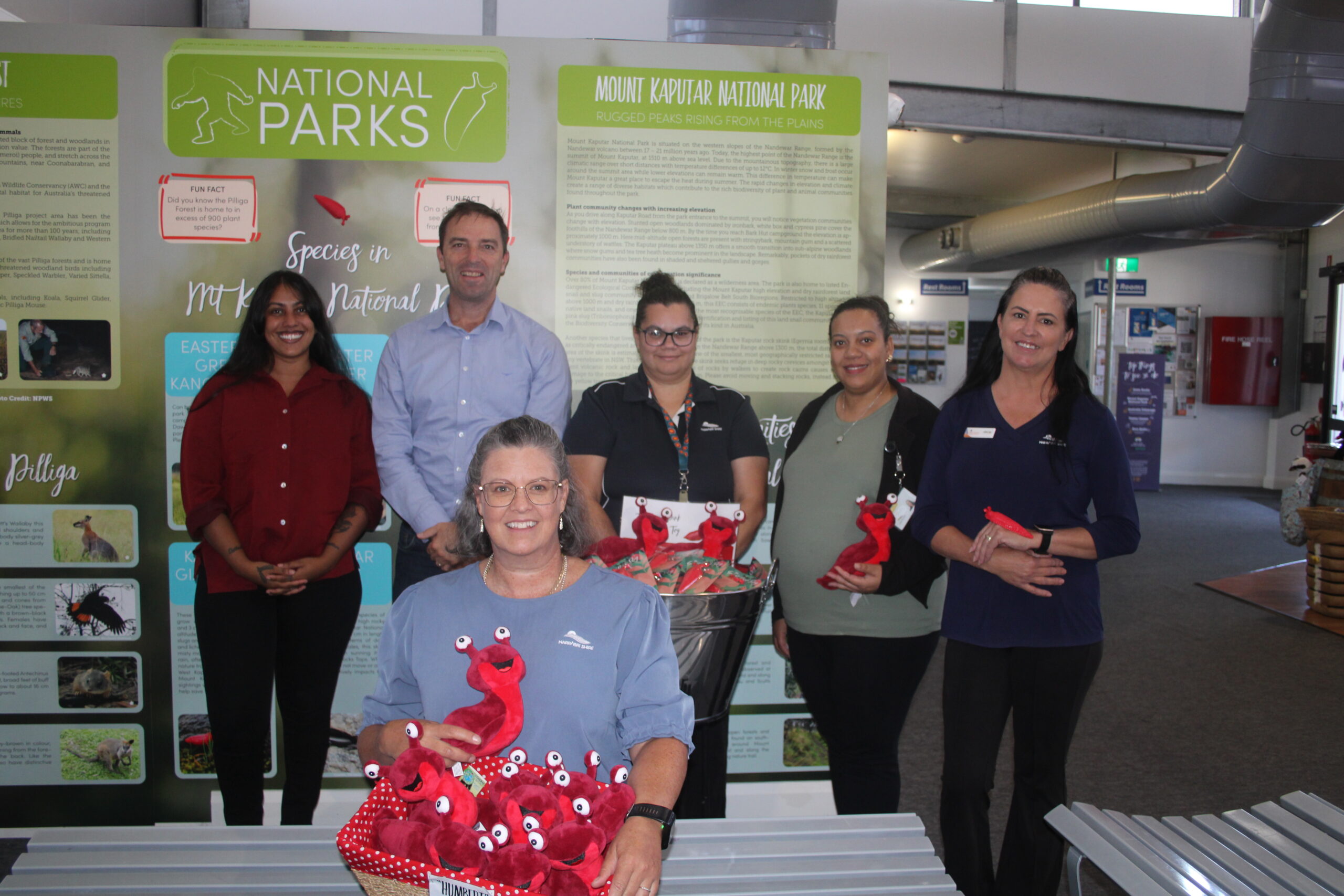Around the Narrabri region, the pink slug species home to Mount Kaputar, have become an iconic sight for locals and visitors.
With their distinctive hot pink hue, these giant critters have overcome harsh conditions but protected themselves to continue thriving within the volcanic areas on Mount Kaputar.
Belonging to the Triboniophorus genus, these slugs are an extremely rare species and can grow up to 20cm long which is the size of the average human hand.
After the horrendous 2019 bushfires, 90 per cent of the population were wiped out. A year later, however, 60 survivors were spotted, and they are now sitting at a high number with citizen scientists having seen up to 300 at one time in recent months.
National Parks and Wildlife Service (NPWS) threatened species project officer, Adam Fawcett explained how remarkable it is that a species so close to extinction has survived and thrived.
“Since 2020 I have been monitoring the Kaputar area for patterns or changes in the slugs and their habitat,” Adam said.
“I’ve seen around 200 animals from my tracking in just the one small area.
“My last count for slugs was early December last year and I recorded 200 slugs on both transects.”
The NPWS have done their part in making sure these slugs continue to thrive with the help of their app Slug Sleuth where visitors can report sightings and upload photos.
Currently, there have been 850 reports.
“The app has been very successful with close to 650 registered users.”
Adam also gave an update on breeding patterns which had skyrocketed in that period between the fires and the end of last year.
“Since our last study, there was a recorded 80 per cent juvenile to 20 per cent adult rate for breeding.”
For this species, there are many risks and predators that are always lingering which is why Adam and NPWS have been focusing on feral animal control.
“Pigs are a big one because they directly impact the slugs and are very aggressive.
“Goats can impact heavily on their habitat which is so important for their survival.”
Another precaution Adam has been taking to ensure their survival is weed control when they are obstructing their habitat or spreading poisonous properties that may break down the soil.
When fires roared through the Kaputar area, the slugs would crawl into the rock crevasses to rest until the weather improved.
On a hunt, Adam went on recently, he was amazed at how deep this species go to protect themselves.
“I was measuring the depth of the cracks trying to find a slug and it got to about a meter and a half. The layer of soil is what protects them, it creates a bit of a warm, safety blanket.”
Looking towards the future of the pink slug existence, Adam is confident that it is looking relatively positive.
“The only concern I have is managing climate change,” he said.
“As these slugs are high elevation animals the dangers of unexpected high heat for long periods of time can be very damaging towards their kind.
“However, as we’ve seen they are a very resilient species so I’m not too doubtful.”
Mayor Darrell Tiemens commented on the astounding attention these slugs have received from visitors that come into Narrabri.
“It is really great to see how iconic this species is becoming for Narrabri, Cr Tiemens said.
“They have enabled a sense of exploring and adventure for people which is exciting when you’re visiting a new town.”
This fantastic species has become quite the novelty at the Visitor Information Centre with merchandise being sold in the gift shop.
As well as gifts such as plushies, clips and magnets, the centre also supply visitors with information sheets from the NSW government.
These answer some of the most frequently asked questions surrounding the species and their remarkable survival.
And of course, look at the National Parks wall inside the centre to read a bit more about the pink slug.
To order photos from this page click here










